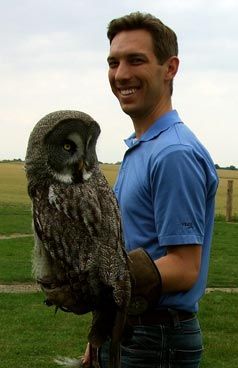Mechanical engineer explores the aerodynamics of flocking together
For the past couple of years, Justin Jaworski has been staring at owls.
But he’s definitely not your ordinary ‘birder.’
Intrigued by this majestic animal’s ability to achieve silent flight as it stalks its prey, Jaworski, assistant professor of mechanical engineering and mechanics, has been studying owl flight in great detail. His research factors in everything from the design of their feathers to the flexibility of their wings, in an effort to leverage the owl’s secrets in the construction of vehicles, especially aircraft.
Recently, however, he’s altered his flight plan to go in a different and broader direction – and the U.S. Air Force’s Office of Scientific Research (AFOSR) is taking notice.
Jaworski was recently selected by AFOSR for its Young Investigator Program to pursue research in the "Evolution and Stability of Vortical Gusts Impinging Upon Elastic Wings." The YIP is open to scientists and engineers at research institutions across the United States who show exceptional ability and promise in research. Its objective is to foster creative basic research in science and engineering, enhance early career development of outstanding young investigators, and increase opportunities for partnership in addressing science and engineering challenges faced by the Air Force.
Jaworski says that the project combines previous research interests in aerodynamics with a bit of a different approach. To demonstrate the specifics, he draws two airplanes on a white board and circles the spot where the contrail (vortex) of one plane comes in contact with the wing of another behind it.
"Birds fly together in formation as a way of conserving energy, relying on each other’s wingpower," he explains. "Despite a great deal of research attention to formation flight, a fundamental understanding of the pertinent vortex-wing interactions is surprisingly underdeveloped. We’re trying to decipher what exactly happens in that spot where the energy of a vortex from one body interacts with a downstream wing, and how we can apply that knowledge to aerodynamic technology today."
When asked why birds figure so heavily into the research of a mechanical engineer, he replies with a smile.
"Scientists who study aerodynamics are continually fascinated by basically anything that flies." said Jaworski. "This new project will hopefully start a conversation about all of the potentially new aerodynamic interactions that are appreciated by birds but are awaiting discovery by humans as our wits grow sharper."
-Simona Galant '18 is a writer with the Dean’s Office of the P.C. Rossin College of Engineering and Applied Science.

